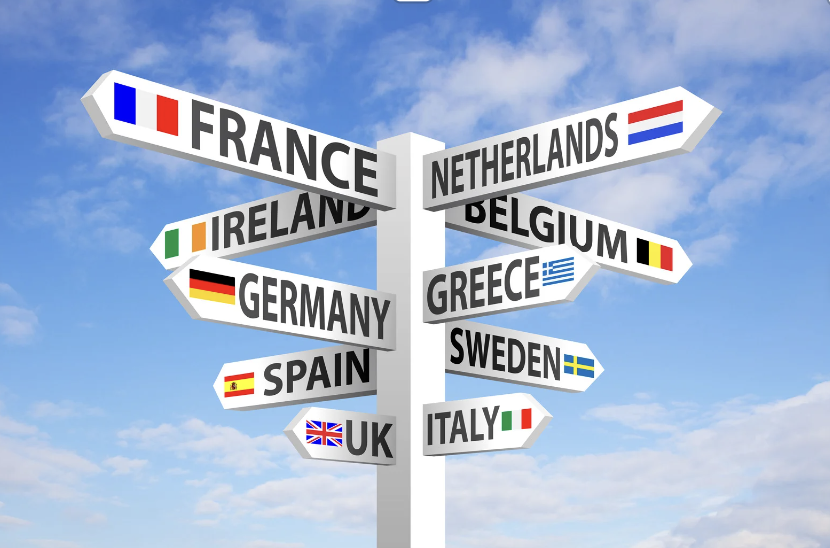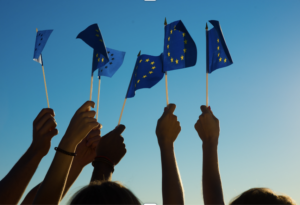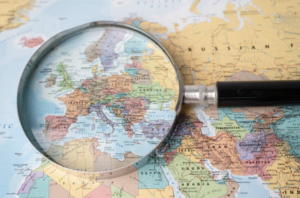
Olusegun Akinfenwa writes for the Immigration Advice Service, a leading team of legal
experts specialising in immigration law. The firm empowers individuals in the United
States and worldwide by advising and guiding them through the global immigration and
asylum complexities.
In just 25 years, Europe’s immigration discourse has shifted dramatically. Once centered on the
Gastarbeiter;—or guest workers—primarily from within the continent, the debate now heavily
revolves around asylum seekers from the Middle East and Africa. But as this narrative has
evolved, one question remains: Has Europe’s foundational stance on immigration truly
changed? The current conversation pits advocates of humanitarianism and diversity against
those wary of cultural erosion and compromised sovereignty.
On the positive side, Europe has overcome its past divisions and conflicts, creating a free
movement and integration zone. However, the continent now grapples with fresh challenges,
especially with the influx of non-European refugees and asylum seekers. This shift has
radicalised European politics, making immigration a central theme for extreme right-wing parties
in Holland, Italy, France, Spain, and parts of Eastern Europe. In this piece, Olusegun Akinfenwa
from the Immigration Advice Service (IAS), a prominent global immigration and asylum law firm,
delves into these contrasting narratives, examining the future prospects and implications these
challenges present for Europe.
The Gastarbeiter Era:
Just a quarter century ago, the immigration debate in Europe was centred on discrimination
against EU migrants – mainly from southern Italy, Spain, Portugal and Greece to northern
European countries — largely known in German as “Gastarbeiter.” The term Gastarbeiter
(guest worker) was coined in Germany in the 1950s to describe the foreign workers recruited to
fill the labour shortages due to the post-war economic boom. Most of these workers came from
Italy, Spain, Portugal, Greece, Turkey, and Yugoslavia.
As of 1961, the number of foreign workers was close to 700,000. However, by 1968, just seven
years later, it was at over 2.3 million. This migration peaked in 1974, reaching over 4 million,
about 7% of the German population. These workers were expected to return to their home
countries after a few years. However, many settled permanently in Germany and other northern
European countries.
The presence of these Gastarbeiters sparked debates about their social and economic
integration and cultural and religious identity. These debates intensified in the 1980s and 1990s
as Europe faced economic recession, unemployment, and social unrest. Consequently, the
intra-European migrants faced various challenges in their host countries, from language barriers
to discrimination, exploitation, isolation, and marginalisation. They often worked in low-skilled
and low-paid jobs that native workers didn’t want to handle.

The Schengen Agreement and European Solidarity
The Schengen Agreement was one of the earliest pointers that turned the wave of immigration
in Europe. As Belgium, Luxembourg, the Netherlands, France, and West Germany put pen to
paper in 1985, the primary goal was to abolish checks at common borders. At the time, the
Schengen area had a population of around 152 million, spanning 800,000 square kilometres.
Today, 27 countries are part of the agreement, with over 447 million Europeans enjoying free
travel across 4 million state kilometres.
Simultaneously, Europe witnessed the European Union’s growth, with an increasing number of
nations joining the bloc. With this, citizens from member countries could live, work, and study
anywhere within the EU. Gradually, the idea of Gastarbeiter reduced, and everyone became
more or less EU citizens. That was also the birth of the concept of European Solidarity.
The New Face of Immigration: Middle Eastern and African Migrants:
Europe is now at the forefront of a new migration wave, predominantly involving immigrants
from the Middle East and Africa. This new face of immigration presents unique challenges,
including integration hurdles to political debates surrounding asylum policies. According to data
from Statista, Europe was the chief destination for Africans living outside Africa. The number
was at about 11 million in 2020.
Illustrating the escalating magnitude of this challenge, in September 2023, over 120 boats
bearing approximately 7,000 African migrants landed on a Mediterranean island in Italy in just
one day. The frequency of Mediterranean crossings has also surged in the past year alone. The
Central Mediterranean saw a spike of 56%, with about 105,000 crossings documented. Yet, the
most significant increase was along the Western Balkan routes, which witnessed a staggering
rise of 134% since 2021.
The migrants take such risks to reach Europe for better living standards and higher incomes. It is
so because many African and Middle Eastern countries suffer from poverty, unemployment, and
underdevelopment. For instance, the average GDP per capita PPP (purchasing power parity) in
many countries migrants flee from is significantly lower than in the developed economies they
often seek refuge in. Also, many migrants escape from violence and human rights violations.
The wars and crises in Middle Eastern countries like Iraq and Syria continue to produce more
refugees. Many of the over 12 million displaced Syrians seek shelter in European countries.

The Political Shift and Rise of Extreme Right-Wing Parties
Due to the immigration debates, Europe’s political landscape has shifted noticeably. Right-wing
parties are gaining more supporters, with many using immigration as their rallying point. They
argue that the influx of migrants affects jobs, resources, and the very essence of European
culture. Recently, Italy (led by a far-right politician) put out tougher measures to stop migrants
from arriving. The UK struck a deal not long ago to send migrants to Rwanda.
Many human rights experts view such an approach as an assault on asylum. “People seeking
international protection, fleeing conflict and persecution, have the right to seek and enjoy
asylum – a fundamental tenet of international human rights and refugee law,” says Special
Rapporteur on trafficking in persons, Siobhán Mullally.
However, the discourse isn’t limited to economics or resources. It’s taken on a more troubling
dimension, with biases against specific races and religions becoming evident. Some parties and
media outlets often paint immigrants negatively, especially those from Muslim-majority
countries.
Social and Cultural Impact
The waves of migration into Europe have ushered in a period of notable cultural transformation.
And as opined by the former US president, Donald Trump, it is changing the culture of Europe,
and Europeans should watch themselves. Particularly, the impacts are due to the many different
policies implemented by various EU countries. There is concern that an excess of differing laws
might undermine the borderless movement that member countries have worked to achieve.
However, it’s not all negative, as many commentators have noted. On the one hand, European
cities are experiencing a cultural fusion as people of different backgrounds blend in. For
example, in 2023, Ryyan Alshebil, a Syrian who arrived in Germany in 2015 as a refugee, won a
mayoral election by over 55% of votes. Speaking about his victory, he said, “Today, Ostelsheim
sent an example for broad-mindedness and cosmopolitanism for the whole of Germany. That’s
not something that can be taken for granted in a conservative, rural area.”
The Ongoing Debate: Tensions and Opportunities
From discussions so far, it’s clear that the immigration issue in Europe has both strains and
potential strengths. Current tensions are evident in divisive political campaigns and heated
debates. Daily, newspaper headlines talk about resource allocation problems, employment
competition, and cultural assimilation. However, alongside these challenges lie immense
opportunities. Immigrants bring diverse skills, knowledge, and perspectives that can help
Europe’s economies.
A good example is the UK, where there is growing demonstratable evidence of migrant workers
contributing immensely to the economy. John Hawksworth, chief economist at PwC, said,
“Migrant workers tend to be relatively productive and have filled important skills gaps in the UK
labour market rather than just displacing UK-born workers.” The same economic boost can be
seen in Germany.
Notwithstanding, European leaders remain focused on deterring migrants — particularly illegal
ones. The EU can leverage the opportunities that come with the influx of migrants in other areas
besides labour and economic growth. For instance, it could present an opportunity to strengthen
ties with countries where these asylum seekers come from. However, the body appears to be
going about it the wrong way. Recently, the EU signed a deal with Tunisia worth over €110
million to curb irregular immigration. The agreement has received criticism from many,
especially humanitarian organisations, with concerns of human rights abuses.

Conclusion
Immigration in Europe has come a long way from the days of Gastarbeiter to the present times
when the debate is on African and Middle Eastern asylum seekers. The Schengen Agreement
ensured EU citizens could travel between member states without restrictions, which has
endured until today. Currently, many European countries, like the UK and Italy, are taking
measures to reduce the inflow of asylum seekers. Some of the laws implemented get mixed
reactions from experts and everyday citizens. There are concerns that the many policies and
extreme right-wing arguments against immigration may harm how things are done at the
borders, not only for asylum seekers but even citizens of member states.
